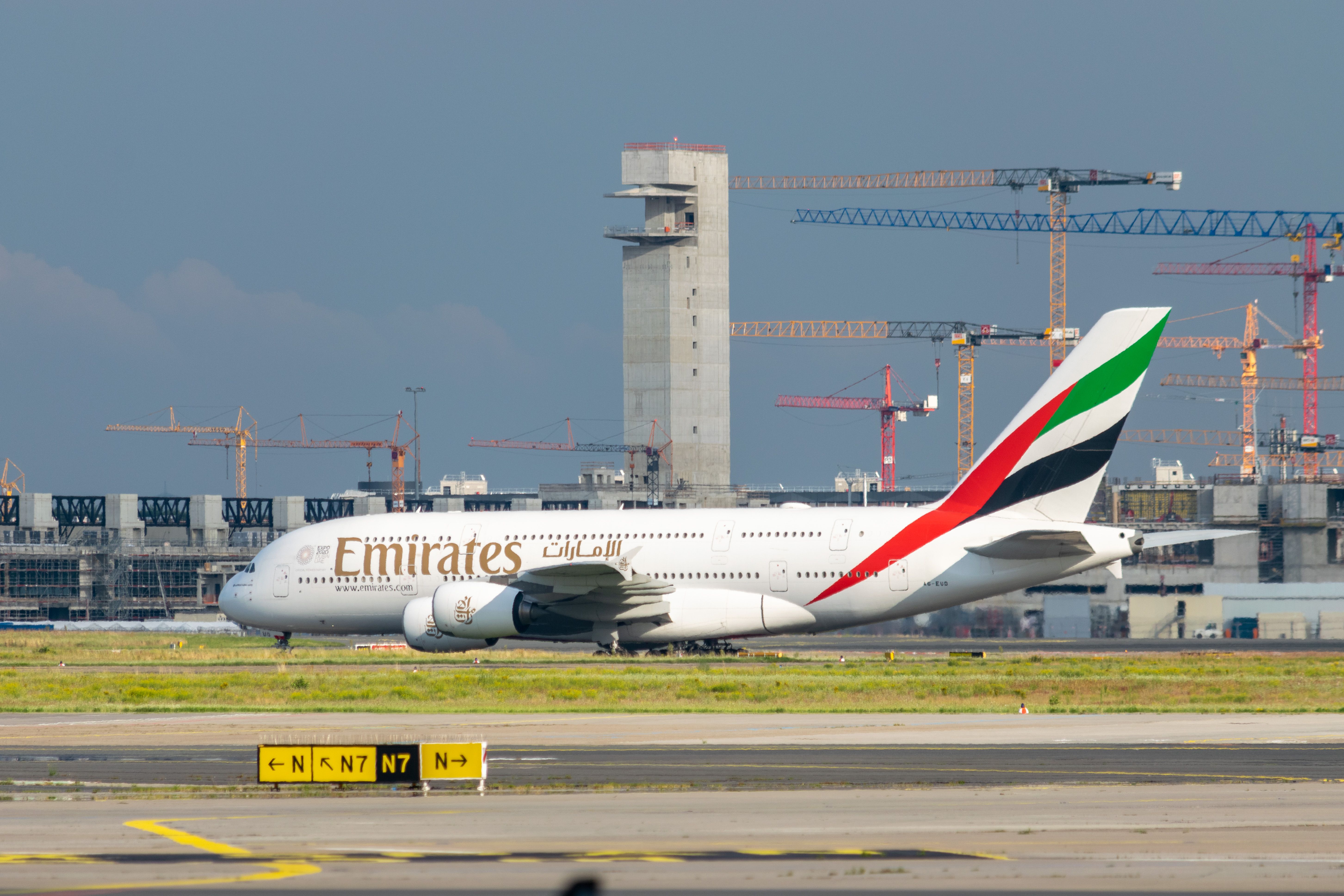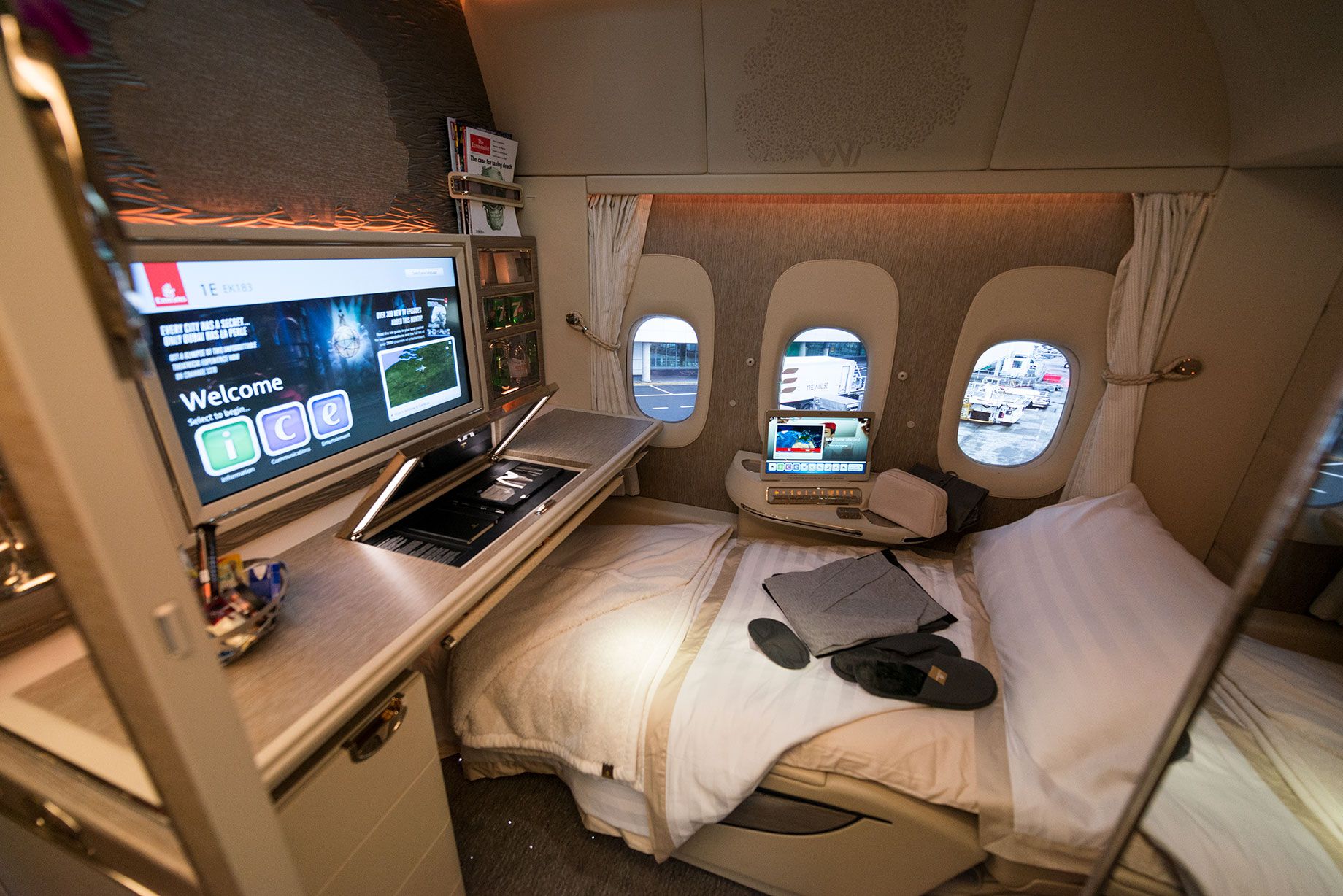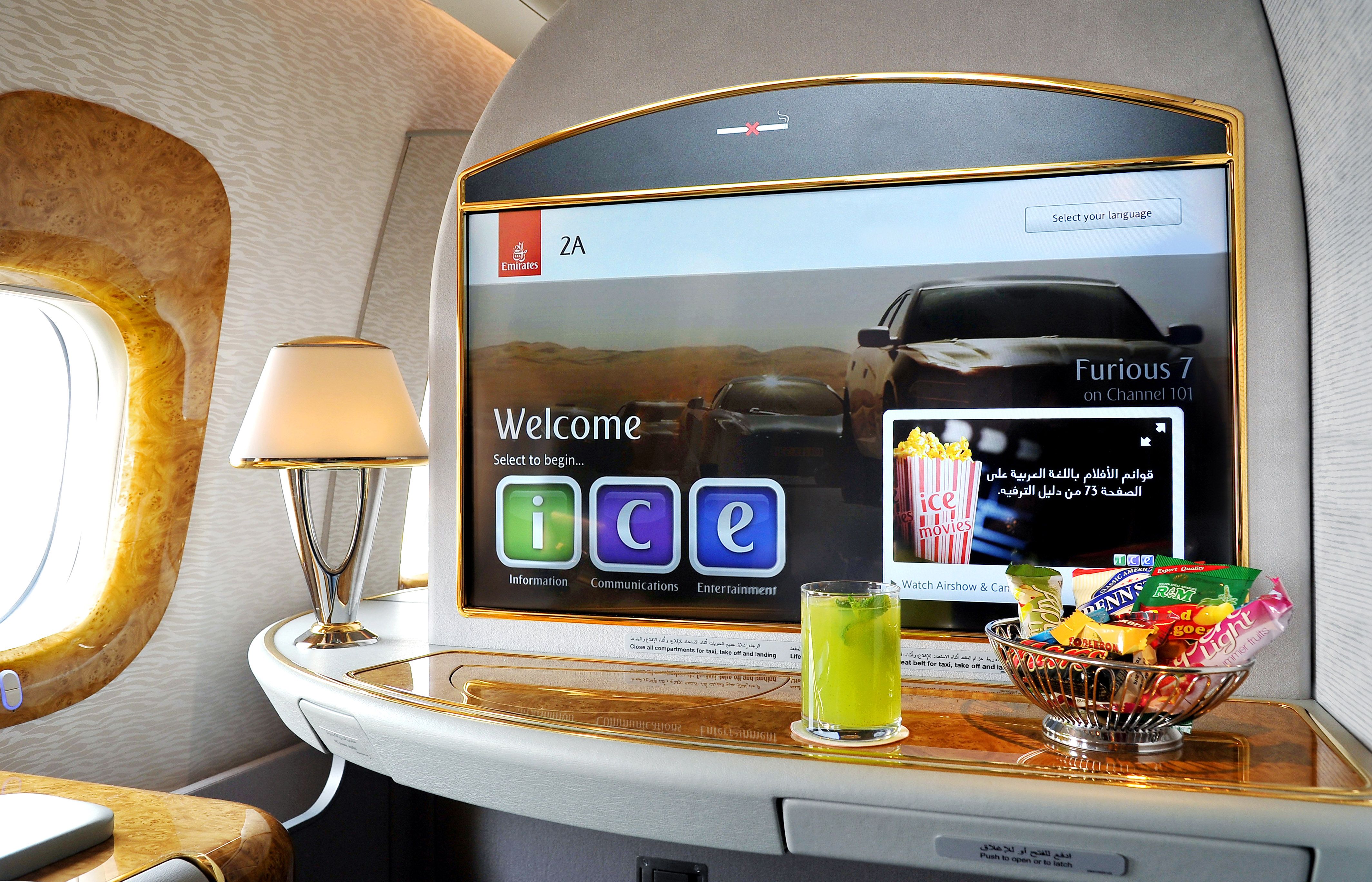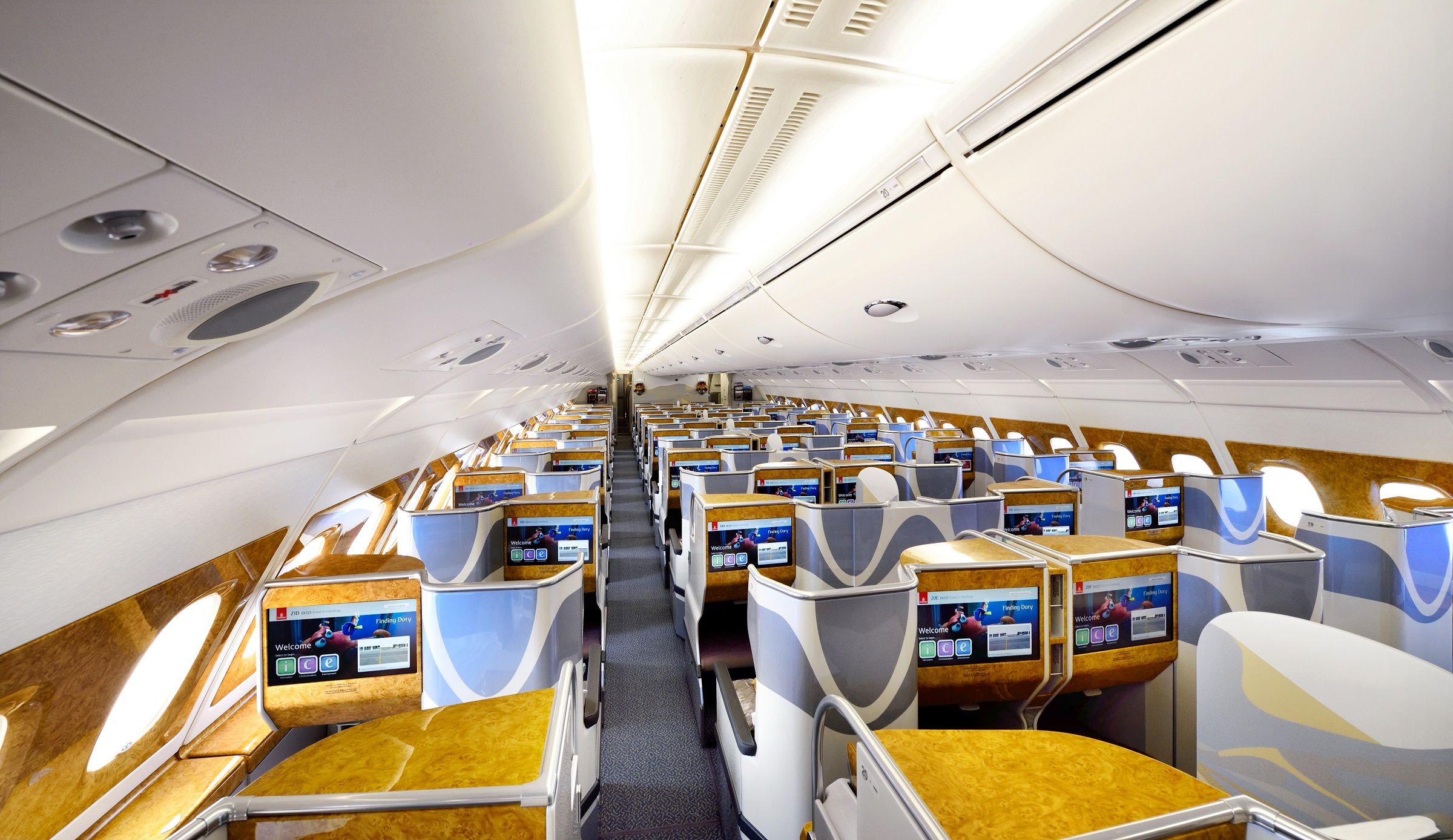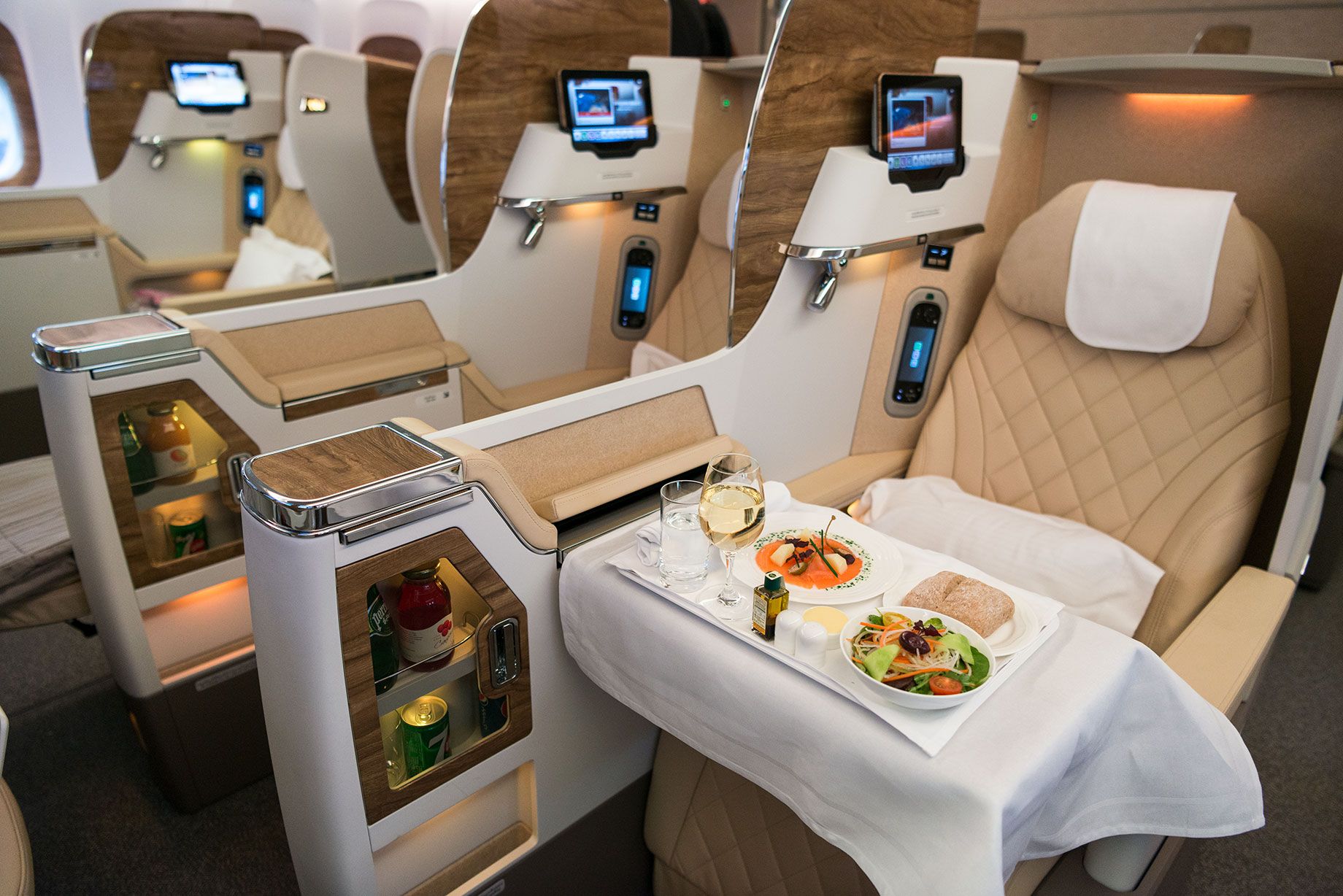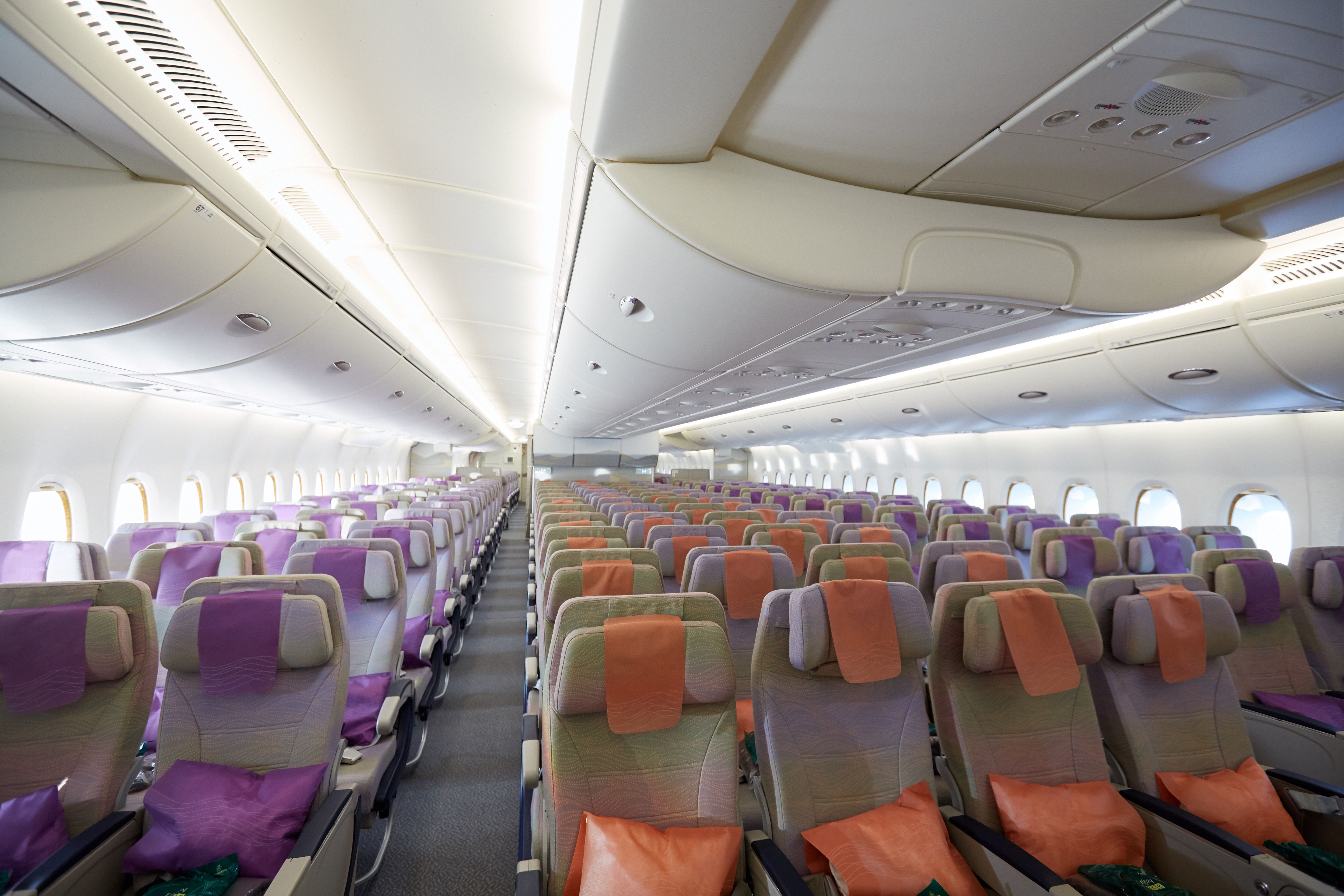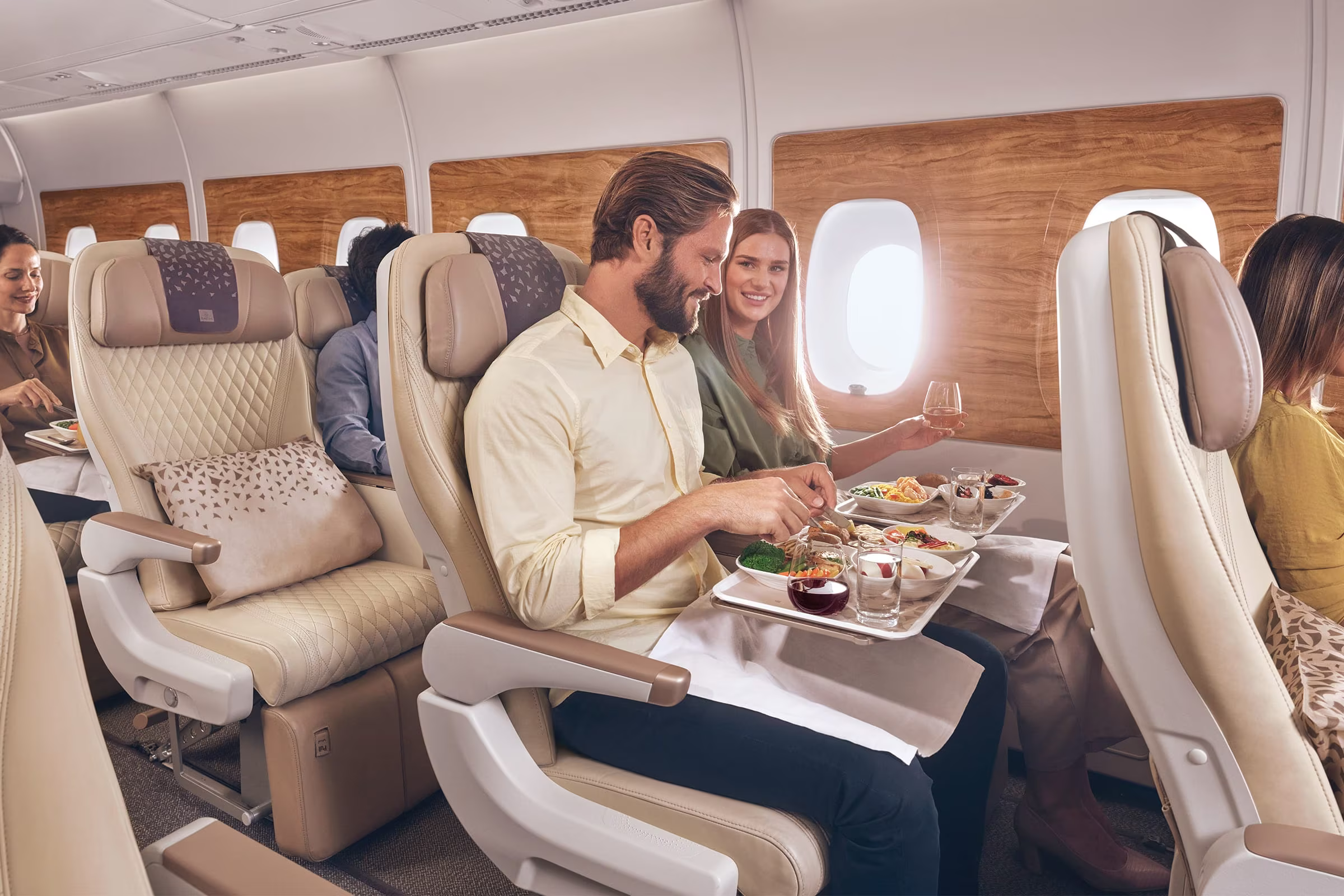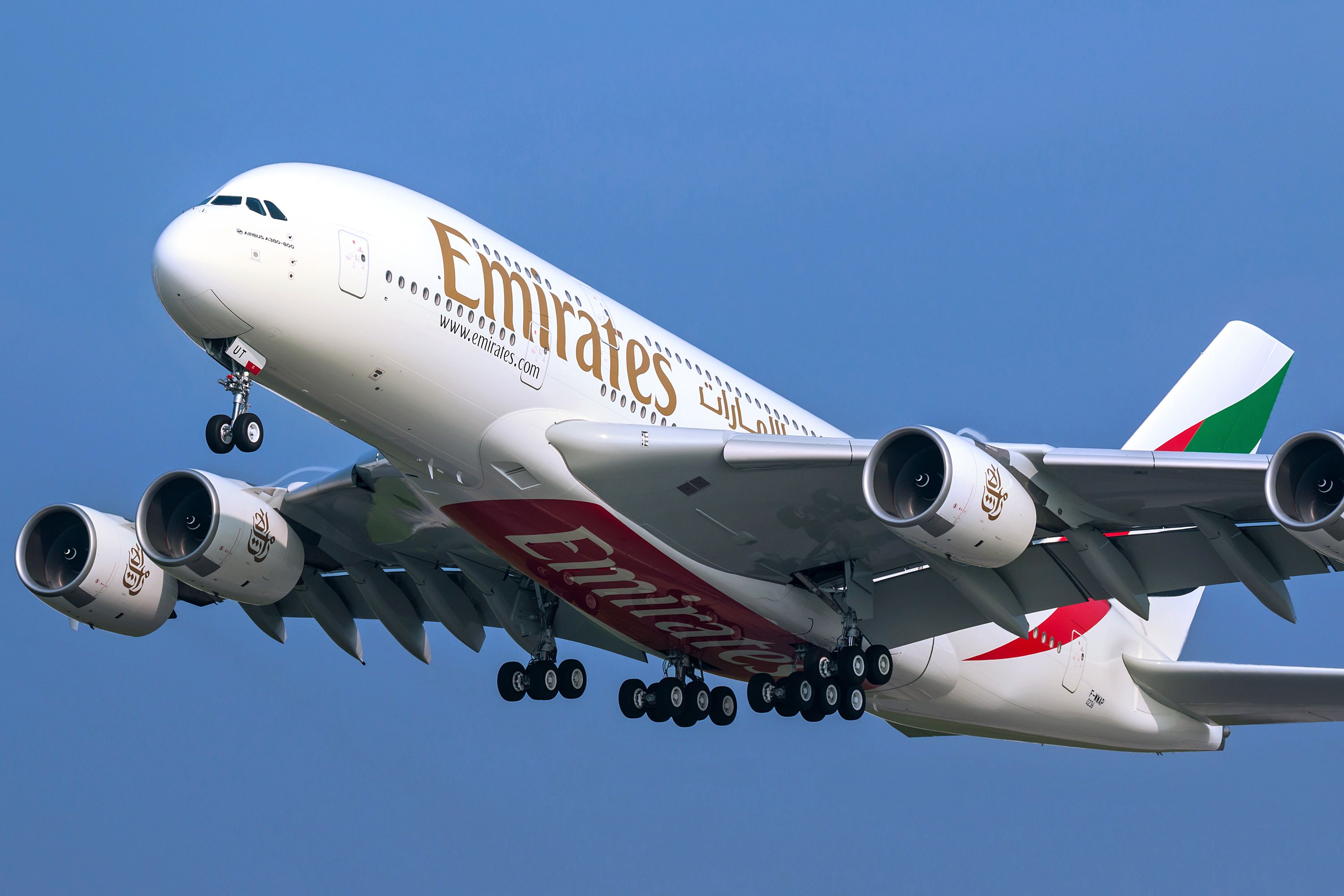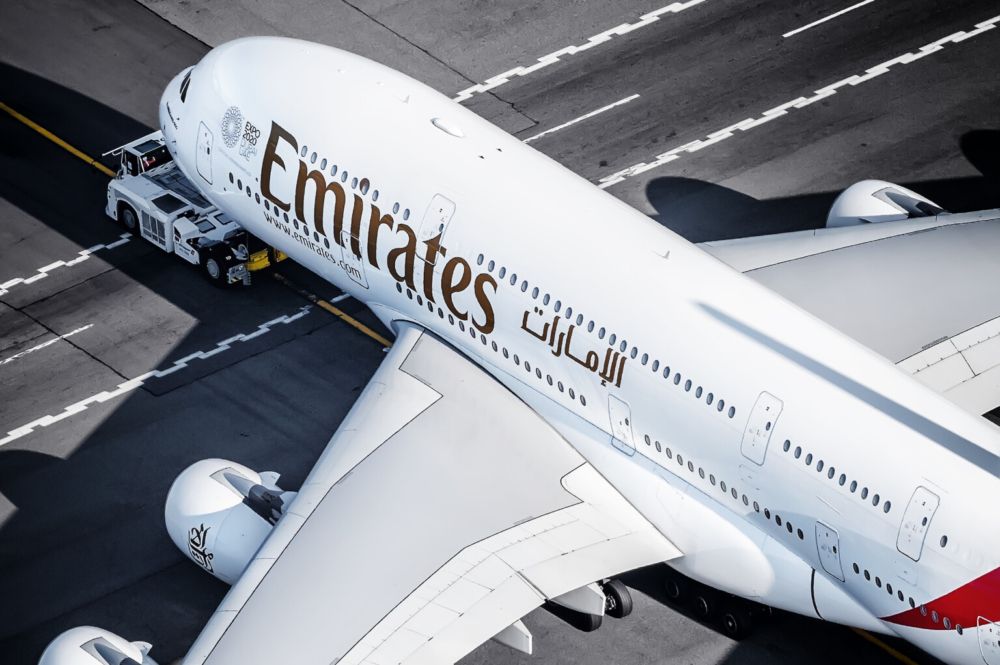Although the Middle Eastern carrier wants to expand its fleet, it currently operates just two aircraft types. Both are widebodies, with the fleet consisting of the Boeing 777 and the Airbus A380.
Emirates does have new aircraft on the way, such as the modern Boeing 787 Dreamliner, the Boeing 777X, and Airbus’ long-range A350. However, if you booked a regular commercial Emirates ticket right now, you will only catch a ride on the 777 or the A380. The airline’s fleet comprises 116 Airbus A380 jets and 133 Boeing 777s, split between 10 Boeing 777-200LR jets and 123 Boeing 777-300ER aircraft.
Want To Learn More About Emirates’ Fleet Diversification?
The airline is known for its elegant style, signature menu, and exquisite comfort levels, but which aircraft will provide a better in-flight experience? Let’s take a deeper look at these two aircraft types.
How do the two aircraft compare?
Despite being dual-aisle high-capacity jetliners, these two aircraft differ significantly. For one, the Airbus A380 has almost double the space onboard compared to the Boeing 777, thanks, of course, to its second level. This means the airline can afford to be a little more abundant with its first and business class offerings onboard the A380 compared to the Triple Seven.
Photo: Tom Boon | Simple Flying
On the other hand, because the 777-300ER carries fewer passengers, this means there is less demand for the services onboard, such as cabin crew attention and the use of lavatories. Passengers onboard the 777 will also experience less crowding at check-in, boarding, and disembarking, and there will be less impact on the overall passenger experience in the way of cabin noise and all the other things that arise from a large group of people sharing confined spaces over some period of time.
Emirates operates two variants of the Triple Seven, with ten B777-200LR and 124 B777-300ER. We will compare the latter with the A380, which makes up a large percentage of the fleet. Both jets come with economy, business, and first-class cabins. The carrier’s newest cabin product, the A380’s premium economy, has been slowly rolled out to several double-decker jets.
Both of them also come with different configurations. To simplify matters, we will focus on the newest versions of each aircraft, as listed on the Emirates website. Let’s begin with the pointy end of the plane.
First class
The Boeing 777-300ER carries eight industry-leading fully-enclosed first-class suites with 60 inches of seat pitch and 20.5 inches of width. These suites are in a 1-2-1 configuration, but you can hardly tell, considering that they have floor-to-ceiling barriers between each suite. The design offers passengers total privacy to dine and be entertained on their terms.
Photo: Emirates
Each suite comes with a private minibar, vanity mirror, table, and electronically closing door. The seats can be reclined to the zero-gravity setting to find the body’s perfect relaxing position, and, unlike shared spaces, first class travelers can control the lighting and temperature to match their preference.
The A380, on the other hand, has 14 closed suites with 86 inches of pitch and 23 inches of width. The private suites also have ambient lighting, sliding doors, and a private cinema. The seat can be converted into a fully flat bed, offering passengers a perfect night’s rest at 40,000ft.
Photo: Emirates
Additionally, the superjumbo first class has a shower and spa with exclusive Bvlgari amenities. It also has an onboard lounge where travelers can enjoy premium beverages served by a dedicated bartender, making it by far one of the finest first-class experiences.
Defining a clear winner between these two products is extremely difficult. The Boeing 777 product is industry-leading due to multiple technological advancements and the nature of fully enclosed suites. But the A380, however, is one of the few places where you can take a shower in the sky. Let’s call this round a draw.
Business class
In the business class cabin, things continue to heat up in the competition between the Boeing 777 and Airbus A380. This class is available on both aircraft in a two-class and three-class configuration.
The A380 has 76 lie-flat seats with 48 inches of legroom in seat mode and is 18.5 inches wide (0.5 inches wider than economy). Business class seats also recline into fully flat beds, and A380 travelers have access to the onboard lounge at the end of the plane, so you don’t have to hang out in your narrow seat for the whole trip.
Photo: Emirates
The cabin is laid out in a 1-2-1 staggered configuration, and the journey starts with chauffeur-driven transfers and access to business class airport lounges. The 777 business class features 60 inches of pitch in seat mode (and angled-flat mode) and is 20.5 inches wide. They might not have a bar to run off to, but the seat itself is bigger compared to the A380. The problem is that the cabin’s 42 business passenger seats are laid out in a 2-3-2 configuration, with an awkward middle seat with no direct aisle access.
Photo: Emirates
Seats come with a personal minibar, and Triple Seven passengers are also offered chauffeur-driven transfers and access to business class airport lounges. Although the 777’s wider seats give you a better night’s sleep, the privacy and lounge access onboard the A380 make it a better choice for this class. Here, we can determine the A380 to be our clear winner.
Economy class
Emirates’ economy class offers passengers wider seats compared to other airlines, HD TV in-flight entertainment, and multi-course regional meals. On longer flights, the airline provides free amenity kits to ensure that passengers arrive feeling fresh.
Onboard the A380, economy passengers can pretend they are in business class as their seat is only 0.5 inches narrower than the 18-inch seats upstairs. However, this joy is quickly diminished thanks to only 32 inches of legroom in a cabin that is 3-4-3 configured.
Photo: Emirates
Economy seating on the Boeing 777 is unquestionably worse, with only 17-inch wide seats and the same 32 inches of legroom in a 3-4-3 configuration. When it comes to passenger comfort, it’s ultimately pretty difficult to tell the difference between these two products, but at the end of the day, we have to give a very slight edge to the A380.
What about premium economy?
For the purposes of our comparison piece, it is challenging to include premium economy as the class has only debuted on a handful of Airbus A380 jets. Initially, the product was featured on newer aircraft flying routes such as Dubai (DXB) to Paris-Charles de Gaulle (CDG) and London Heathrow (LHR). Recently, the cabin has been added to Emirates’ flights to India. When the cabin is completely rolled out, 126 aircraft (including both A380s and 777s) will feature the modern product.
Photo: Emirates
These seats have a 38 to 40 inches pitch and are in a 2-4-2 layout. They are 19.5 inches wide and offer an 8-inch recline. So if you are up for a little bit of extra comfort but not quite prepared to splurge for business or first, the A380 would definitely be your best bet until Emirates rolls out its premium economy on a grander scale.
With more spacious seats, travelers can recline their seats far, raise the cushioned legrest, and adjust the headrest to enhance comfort levels. Larger working and dining tables and pillows make for a more comfortable flight experience.
The bottom line
Across the board, the A380 does maintain a slight edge over its twinjet counterpart. From a strategic perspective, this is to be expected, considering that Emirates operates A380 flights on its highest-demand routes, which are most likely to have business travelers and others for whom quality is a major concern.
Photo: Emirates
While the two are relatively on par in first class and essentially identical in economy, the A380, by virtue of being a larger, roomier aircraft, likely comes out slightly on top in these two spaces. However, the nicer business class on the A380 certainly pushes it over the edge. When premium economy debuts on 777 aircraft, this comparison may need to be revisited.
There is yet another variable to consider when taking a future-focused outlook on the A380 vs 777 debate. The Emirates fleet is set to adjust significantly, and one critical aspect of that development will be the introduction of the Boeing 777X. This aircraft will immediately replace the carrier’s existing 777s but will eventually expand to serve as a long-term replacement for many of the airline’s Airbus A380s.
With a cabin that is roughly three inches (10 centimeters) wider, Emirates could improve its offerings with the new 777X. Furthermore, the aircraft will be significantly longer than its predecessors, opening up even more options for the carrier. We could easily see economy class seats on the 777X that are just as wide as those currently offered on the A380. If desired, the aircraft could also facilitate showers to be placed onboard due to its immense size, again matching A380 offerings.
What do you think? Have you flown on both? Which is more comfortable? Let us know in the comments.


